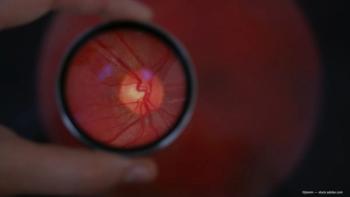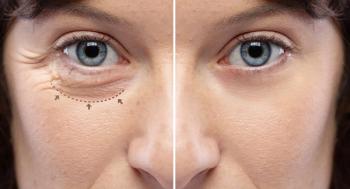
Wavefront-guided LASIK promising for postop re-treatment
Los Angeles—Symptomatic refractive surgery re-treatment using CustomCornea wavefront-guided LASIK (Alcon Laboratories Inc.) dramatically reduces higher-order aberrations, with an accompanying improvement in visual symptoms, according to James J. Salz, MD.
Los Angeles-Symptomatic refractive surgery re-treatment using CustomCornea wavefront-guided LASIK (Alcon Laboratories Inc.) dramatically reduces higher-order aberrations, with an accompanying improvement in visual symptoms, according to James J. Salz, MD.
Using the LADARWave system for aberrometry, CustomCornea surgical planning software, and the LADARVision 4000 excimer laser, the re-treatments resulted in statistically significant reductions in total HOAs, coma, spherical aberration, and trefoil. All patients had UCVA of 20/20 or better at the last visit, symptoms were reduced or eliminated, and patient satisfaction was high.
"The results of this small series show those modalities can be used together to guide re-treatment and achieve improvement in both objective and subjective measures of vision quality," he said. "Further investigation of this use of customized treatment is underway in an ongoing study being sponsored by Alcon."
Prior to the re-treatment, the 10 eyes had a mean refractive error of -0.08 D (range -0.75 to 1.50 D), mean cylinder of -0.498 D (maximum -1 D), and a mean MRSE of -0.16 D.
Total HOA RMS was decreased from 0.8 to 0.53 µm (-33%). Mean reductions in RMS values for coma, spherical aberration, and trefoil were 40%, 49%, and 31%, respectively.
To illustrate further the success of the re-treatment, Dr. Salz presented two case examples. The first was a post-LASIK patient who was emmetropic but had night vision complaints. The primary surgery was performed with a 7-mm ablation and a 1-mm blend zone for a refractive error of -5 D with 2 D of astigmatism. Prior to the re-treatment, the patient had an UCVA of 20/20 and his refraction was plano -0.5 × 170°.
At 9 months after the custom enhancement, his UCVA was 20/15, he had 0.25 D of spherical error, and total HOA was reduced by 58% from 0.67 to 0.28 µm. Analyses of the individual HOAs showed particular reductions in coma and spherical aberration.
"Early after the enhancement, this patient was very satisfied and reported having quality of vision that was better than preoperatively so that we performed a wavefront-guided re-treatment on the second eye after 1 month," Dr. Salz said.
The second case he presented was a patient with a 6.2-mm scotopic pupil who was experiencing monocular diplopia, glare, and halos secondary to a decentered PRK ablation. Customized treatment resulted in recentering of the ablation with significant reductions in vertical coma from 0.74 to 0.07 µm and in spherical aberration from 0.56 to 0.23 µm. The patient had UCVA of 20/20 and resolution of his visual complaints.
Newsletter
Don’t miss out—get Ophthalmology Times updates on the latest clinical advancements and expert interviews, straight to your inbox.









































